Disclosure: This article contains affiliate links. We may earn a commission from purchases at no extra cost to you, which helps our travel content.
There's something undeniably magical about stepping through the medieval gates of Rothenburg ob der Tauber. The cobblestone streets, half-timbered houses, and imposing medieval walls transport you to a storybook version of Germany that feels almost too perfect to be real. But I can assure you, after multiple visits spanning nearly a decade, this gem along the Romantic Road delivers an authentic shopping experience that rivals any European destination. My first visit was a spontaneous detour during a particularly difficult Christmas season following my divorce. What I discovered was not just retail therapy, but a town that has perfected the art of commerce while maintaining its soul—something increasingly rare in our homogenized global marketplace. Whether you're hunting for handcrafted treasures or seeking the quintessential German Christmas market experience with your family in tow, Rothenburg offers a shopping adventure that satisfies both the connoisseur and the casual browser. Let me guide you through the retail wonders of this medieval masterpiece.
Christmas Market Magic: Reiterlesmarkt Revealed
Rothenburg's Reiterlesmarkt isn't just another Christmas market—it's a centuries-old tradition that transforms the medieval Marktplatz into a winter wonderland that would make even the most jaded traveler pause in childlike wonder. Dating back to the 15th century, this market takes its name from the mysterious 'Rothenburger Reiterle,' a folkloric figure who once was believed to float through the winter sky carrying souls of the dead.
On my first visit with my teenage son last December, we arrived at dusk—the perfect time to experience the market's full enchantment. The medieval square was illuminated by thousands of tiny white lights, creating a canopy of stars above the wooden stalls. The scent of glühwein (mulled wine) mingled with roasted almonds and gingerbread, creating an olfactory experience as rich as the visual one.
What separates Rothenburg's market from others I've visited throughout Europe is its remarkable authenticity. There's a refreshing absence of mass-produced trinkets that plague so many tourist destinations. Instead, you'll find local artisans selling hand-carved wooden ornaments, delicate glass decorations blown in nearby workshops, and textiles that reflect traditional Franconian patterns.
My son, typically glued to his phone, actually tucked it away as we wandered from stall to stall, captivated by craftspeople demonstrating techniques passed down through generations. We spent nearly an hour at one booth where a silversmith created intricate snowflake pendants, each one unique. The artisan explained how his family had been creating these ornaments for over a century, using the same tools his grandfather once wielded.
For families navigating the market, I recommend arriving around 4 pm when the crowds are thinner but the atmosphere is building. By 6 pm, the market reaches its magical peak as darkness falls and the lights create their full effect. Bring cash—many vendors don't accept cards—and don't miss sampling 'schneeballen' (snowballs), the local pastry specialty dusted with powdered sugar or dipped in chocolate that my son declared 'actually Instagram-worthy.'

💡 Pro Tips
- Visit the market at dusk for the most magical lighting and atmosphere
- Bring cash as many vendors don't accept cards
- Try the local 'schneeballen' pastry—the cinnamon and chocolate versions are particularly delicious
Käthe Wohlfahrt: Christmas All Year Round
No shopping expedition in Rothenburg is complete without a pilgrimage to Käthe Wohlfahrt, the epicenter of German Christmas decoration culture that operates year-round in this medieval town. Located in a 16th-century building on Herrngasse, this isn't merely a store—it's an institution that has elevated Christmas decorations to an art form.
Pushing open the heavy wooden door, I was immediately transported to a perpetual December 24th. The main showroom is deliberately designed to resemble a traditional German Christmas village, complete with a massive Christmas tree as its centerpiece, adorned with thousands of ornaments that catch and reflect the warm lighting. The effect is both overwhelming and mesmerizing.
What strikes me about Käthe Wohlfahrt, beyond its obvious commercial success, is its dedication to preserving traditional German craftsmanship. Their signature wooden ornaments, nutcrackers, and smokers (incense burners shaped like little people) are produced using techniques that have remained largely unchanged for generations. During my last visit, I had the pleasure of chatting with one of their senior sales associates who explained how many of their artisans train for years to master the intricate wood-turning techniques required for their signature pieces.
The store's crown jewel is undoubtedly the Christmas Museum (Deutsches Weihnachtsmuseum) located upstairs. For a modest entrance fee (€5 when I last visited), you can explore the evolution of Christmas decorations from the 17th century onward. My son, initially skeptical about a 'Christmas museum,' was genuinely fascinated by the historical context provided for traditions we often take for granted.
For those looking to invest in heirloom-quality decorations, I recommend their hand-painted glass ornaments. While not inexpensive—expect to pay €20-40 per piece—they're exquisite works of art that will become family treasures. I've added one to my collection each visit, carefully wrapping them in my packing cubes to ensure they arrive home safely. These compression cubes have saved countless delicate souvenirs over the years, creating protective barriers between fragile items and the rigors of international travel.
A word of caution: during peak season (October through December), the store becomes extraordinarily crowded. Visit first thing in the morning or in the late afternoon for a more pleasant experience. And if you're traveling with children, establish a clear budget before entering—the enchantment of the place has been known to weaken even the most disciplined parental resolve.
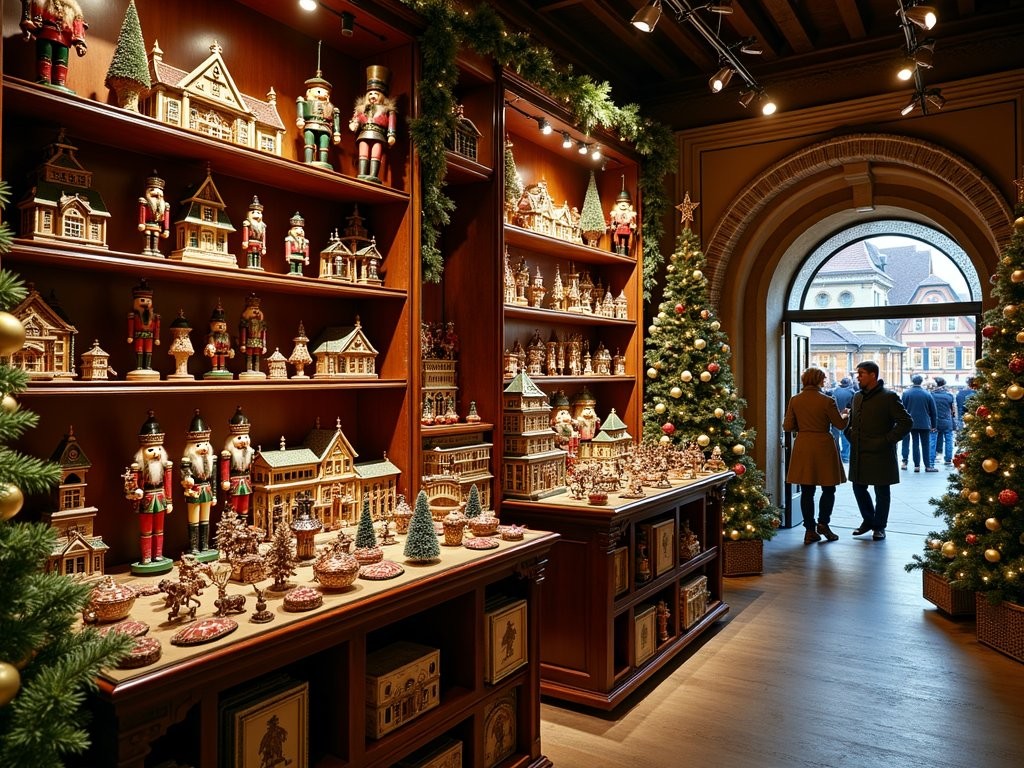
💡 Pro Tips
- Visit early morning or late afternoon to avoid crowds
- Set a clear budget before entering—it's easy to get carried away
- Don't miss the Christmas Museum upstairs for historical context
Artisan Treasures: Beyond the Tourist Trail
While Rothenburg's main shopping streets—Schmiedgasse and Herrngasse—offer plenty of delightful stores, the true treasures of this medieval town lie hidden in the quieter lanes that branch off from the well-trodden tourist paths. These artisan workshops represent the beating heart of Rothenburg's authentic shopping experience, where craftsmanship trumps commercialism.
On my second day in Rothenburg during my most recent visit, I deliberately lost myself in the eastern quarter of the old town, beyond the crowded central square. Along Galgengasse, I discovered Kunsthandwerk Friese, a family-run workshop where third-generation woodcarver Thomas Friese creates stunning pieces inspired by medieval motifs. Unlike the mass-produced 'handcrafted' items found in tourist shops, Friese's work shows the subtle imperfections and character that only come from genuine hand-craftsmanship. I purchased a small relief carving of the town's skyline that now holds pride of place in my home office—a daily reminder of Rothenburg's timeless beauty.
Further exploration led me to Anneliese Friese Pottery (no relation to the woodcarver) on Klostergasse. This unassuming studio produces some of the most distinctive ceramics I've seen in Germany. The signature blue-and-white patterns draw inspiration from traditional Franconian designs but incorporate contemporary elements. What makes this shop special is the opportunity to watch Anneliese work at her wheel in the back of the shop. My son, initially reluctant to enter what he deemed 'another boring store,' ended up spending nearly an hour watching her transform a lump of clay into an elegant vase, completely mesmerized by the process.
Perhaps my favorite discovery was Leyk Metalwork on Spitalgasse. Master metalsmith Johann Leyk creates extraordinary pieces that blend medieval techniques with modern design sensibilities. His hand-forged candleholders, featuring intricate scrollwork reminiscent of Gothic architecture, are functional art pieces that will last generations. While not inexpensive—prices start around €80 for smaller pieces—they represent exceptional value for handcrafted metalwork of this caliber.
For those interested in historical crafts, don't miss the small but fascinating workshop of Rothenburg Historical Garments near the Castle Gardens. Here, Helga Müller creates historically accurate medieval clothing using period-appropriate techniques and materials. Even if you're not in the market for a medieval costume (though they make extraordinary Halloween or Renaissance fair attire), the shop offers smaller textile items like hand-embroidered pouches and purses that make unique souvenirs.
Navigating these artisan shops requires patience and a willingness to communicate across potential language barriers. Many of these craftspeople speak limited English, but their passion for their work transcends verbal communication. I've found that showing genuine interest in their techniques often leads to impromptu demonstrations and sometimes even a glass of local wine shared in their workshop.

💡 Pro Tips
- Visit workshops in mid-morning when artisans are often most willing to demonstrate their craft
- Bring cash as many smaller workshops don't accept credit cards
- Ask if shipping is available for larger purchases—many artisans have experience shipping internationally
Culinary Souvenirs: Tastes of Franconia
Shopping in Rothenburg extends beyond ornaments and handicrafts to include culinary treasures that capture the essence of Franconian gastronomy. These edible souvenirs offer a delicious way to extend your Rothenburg experience long after you've returned home.
My culinary exploration always begins at Fridolin's Conditorei on Marktplatz, a confectionery that has perfected the art of schneeballen (snowballs). These pastries—made from strips of shortcrust dough formed into a ball and deep-fried—have been a Rothenburg specialty since the 18th century. While traditional versions are simply dusted with powdered sugar, Fridolin offers innovative variations including marzipan, champagne truffle, and my personal favorite, hazelnut praline. The shop packages them beautifully in protective boxes, making them ideal gifts that survive the journey home remarkably well.
For wine enthusiasts, Rothenburg offers access to exceptional Franconian wines that rarely make their way to international markets. Glocke Weingut, a small wine shop tucked away on Wenggasse, specializes in wines from the nearby Tauber Valley. The proprietor, Herr Berger, is passionate about supporting small local vineyards and offers informative tastings (€10 for six wines) that showcase the distinctive character of Franconian Silvaner and Müller-Thurgau varieties. The shop's signature offering is its Rothenburger Festwein, a semi-dry white wine produced exclusively for the town's historical festival. I always pack my wine protector sleeves when visiting Rothenburg, as these ingenious inflatable sleeves have saved countless bottles during my travels, protecting them from both breakage and temperature fluctuations.
No culinary shopping expedition would be complete without a visit to Käsekammer on Hafengasse, a cheese shop that showcases regional varieties alongside European classics. The shop's specialty is Rothenburger Käsestange, a semi-hard cow's milk cheese infused with local herbs that pairs brilliantly with Franconian wine. The proprietor offers vacuum-sealing services, ensuring your cheese selections remain fresh for the journey home.
For those with a preference for savory souvenirs, Spezialitäten Plapp on Georgengasse offers an impressive selection of traditional Franconian sausages and cured meats. Their signature product, Rothenburger Bratwurst, is prepared according to a 500-year-old recipe and can be vacuum-packed for travel. During my last visit, I purchased their curated 'Franconian Sampler' box, which included three varieties of sausage, mustard, and sauerkraut—all the essentials for recreating a German feast at home.
Perhaps the most unique culinary souvenir comes from Rothenburg's oldest wine cellar, Glocke Weinkeller, which produces a traditional medieval honey wine based on recipes from the town's archives. Packaged in replica medieval bottles complete with wax seals, it makes for both a delicious and decorative memento of your Rothenburg experience.
A word of advice for culinary souvenir hunters: familiarize yourself with your home country's import regulations before purchasing perishable goods. While most packaged items travel well within Europe, international visitors may face restrictions on certain food products.
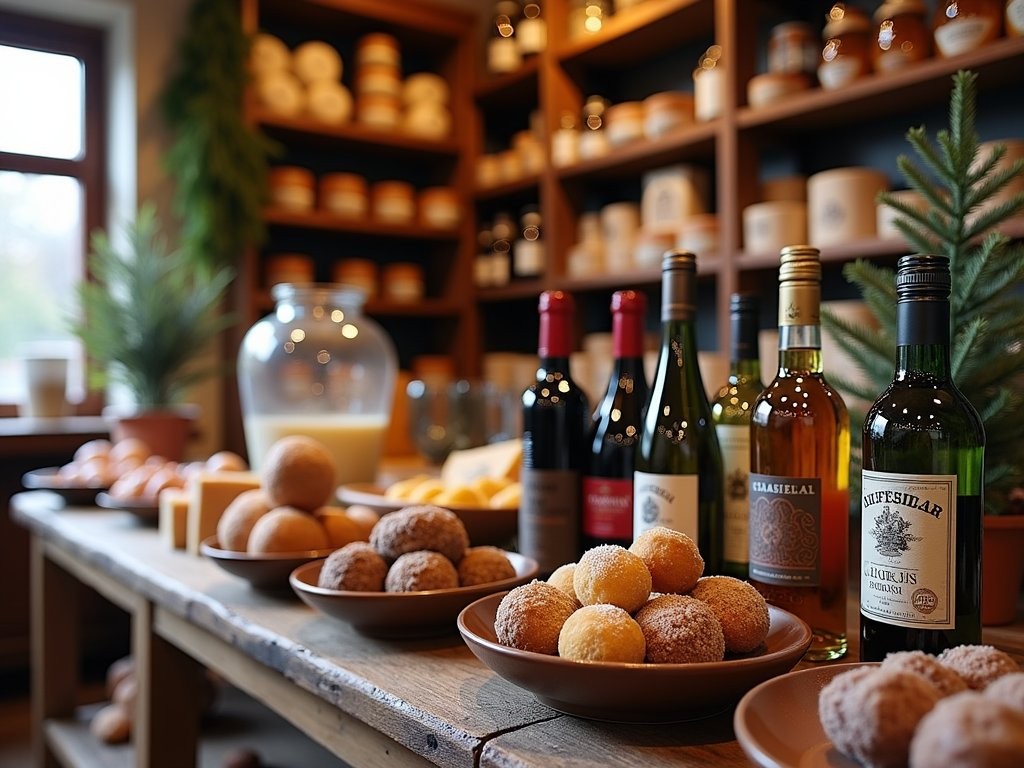
💡 Pro Tips
- Ask for vacuum-sealing services when purchasing cheese or meats for travel
- Check your home country's import regulations before purchasing perishables
- Visit specialty food shops early in the day when selections are freshest
Shopping the Medieval Wall: Unique Boutiques
One of Rothenburg's most distinctive shopping experiences lies along and near its famous medieval wall circuit. While most tourists simply walk the ramparts for the views, savvy shoppers know that some of the town's most interesting boutiques are nestled against these ancient fortifications.
My favorite discovery came during an early morning wall walk when I noticed a small sign pointing down a narrow passage near Siebersturm (Siebers Tower). Following it led me to Kunsthof Gallery, housed in what was once a guard's quarters built into the wall itself. The space has been brilliantly repurposed as a contemporary art gallery showcasing works by regional artists. The juxtaposition of modern art against the 700-year-old stone walls creates a compelling aesthetic dialogue. I was particularly taken with Elsa Heinemann's mixed-media pieces incorporating fragments of medieval manuscripts with contemporary imagery. The gallery's owner, a former art professor from Nuremberg, curates the collection with discerning taste, focusing on artists who draw inspiration from the region's rich history while expressing thoroughly contemporary perspectives.
Nearby, Buchhandlung am Burgtor (Bookshop at the Castle Gate) occupies a sliver of space between two defensive towers. This charming bookstore specializes in historical works about Rothenburg and the surrounding region, including beautifully illustrated volumes documenting the town's architecture and artistic heritage. The English-language selection is surprisingly robust, featuring both scholarly works and more accessible illustrated books perfect for coffee tables back home. I spent a delightful hour browsing their collection of historical maps and prints, eventually purchasing a reproduction of a 17th-century engraving showing Rothenburg as it appeared during the Thirty Years' War.
For those interested in traditional German clothing with a contemporary twist, Trachten Strasser near Rödertor offers handcrafted pieces that reference Bavarian and Franconian folk costumes without veering into tourist cliché. Their modern interpretations of traditional vests and jackets use authentic materials and techniques but feature updated cuts and styling that work seamlessly with contemporary wardrobes. I invested in a beautifully tailored wool vest with silver buttons that has become a conversation starter at dinner parties back home.
Perhaps the most unexpected find along the wall circuit is Mittelalterliche Schreibstube (Medieval Writing Room) near Klingentor. This fascinating shop specializes in calligraphy supplies and handmade papers produced using historical techniques. The owner, a practicing calligrapher, offers short demonstrations of medieval writing methods and sells beautiful handcrafted journals bound in leather with traditional stitching. My son, initially indifferent, became completely engrossed in a demonstration of quill preparation and ink making, eventually selecting a beginner's calligraphy set that has since sparked a genuine interest in this historical art form.
Navigating these wall-adjacent shops requires some flexibility in your schedule—many operate on limited or seasonal hours, and some close for lunch in the traditional German manner. I've found it worthwhile to make a preliminary circuit noting which shops interest you, then planning a dedicated shopping excursion once you've confirmed their opening times. For photography enthusiasts like myself, I recommend bringing a camera sling rather than a bulky backpack. This compact but versatile camera bag has been my constant companion on European adventures, allowing me to quickly access my gear in narrow medieval streets while providing enough protection for my equipment.

💡 Pro Tips
- Check opening hours carefully as many wall-adjacent shops keep irregular schedules
- Bring small denominations of cash as some of the smallest shops don't accept cards
- Ask shopkeepers about the history of their buildings—many have fascinating stories about their historic locations
Family-Friendly Shopping Adventures
Shopping with children in tow can sometimes feel like a challenge, but Rothenburg offers several retail experiences specifically designed to engage younger visitors while still appealing to discerning adults. Having navigated these cobblestone streets with my initially reluctant teenage son, I can attest that the right shops can transform shopping from a chore into a highlight of your family vacation.
The Teddy Land workshop and store on Hofbronnengasse became our unexpected favorite family shopping experience. This charming establishment specializes in handcrafted teddy bears made using traditional German techniques. What elevates this beyond a typical toy store is their 'Build-A-Bear' style workshop where children can participate in creating their own souvenir. My son, despite initially declaring himself 'too old for stuffed animals,' became thoroughly invested in designing a steampunk-inspired bear complete with tiny leather goggles and a miniature waistcoat. The craftspeople are exceptionally patient with younger visitors, guiding them through age-appropriate aspects of the creation process. The resulting bears are heirloom-quality pieces that far surpass mass-produced alternatives.
For families with a sweet tooth, Zuckerbäcker on Schmiedgasse offers an interactive candy-making experience that fascinates visitors of all ages. The shop features regular demonstrations of traditional hand-pulled candy techniques, where skilled confectioners transform molten sugar into intricate designs before your eyes. Children are invited to suggest shapes and colors, making each demonstration unique. The resulting candies are not only delicious but serve as edible souvenirs of your Rothenburg adventure. I recommend their signature 'Rothenburger Wickel'—twisted candy sticks flavored with local herbs and berries.
The Medieval Crime Museum's gift shop deserves special mention for families with older children and teens. While the museum itself (one of Europe's most important legal history collections) might sound academic, it presents its macabre content in an engaging, educational manner. The accompanying shop offers historically informed reproductions of medieval items alongside more whimsical souvenirs. My son was particularly taken with their collection of replica medieval games, eventually selecting a beautifully crafted wooden strategy game that has since become a family favorite on game nights.
For creative youngsters, Künstlerwerkstatt (Artist's Workshop) on Klosterhof offers drop-in art sessions where children can create their own Rothenburg-inspired masterpieces. Using quality materials and guided by local artists, participants can try their hand at watercolor, block printing, or simple wood carving. The two-hour sessions require advance booking during peak season but provide a welcome creative outlet—and the resulting artwork makes for a meaningful, personalized souvenir.
Navigating Rothenburg's shopping scene with children requires some strategic planning. I found that alternating between 'adult' and 'child-focused' shops helped maintain enthusiasm throughout our shopping expeditions. Carrying a collapsible water bottle for each family member is essential for staying hydrated during summer shopping adventures. These ingenious bottles fold down when empty, saving precious bag space while exploring the shops, and can be refilled at the many public fountains throughout town.
I also recommend establishing a souvenir budget for each family member at the beginning of your trip. This not only teaches valuable financial literacy but transforms shopping from a series of 'can I have this?' negotiations into a more thoughtful exercise in prioritizing and decision-making. My son's carefully considered purchases have become some of his most treasured souvenirs precisely because he invested time in selecting items that truly resonated with him.
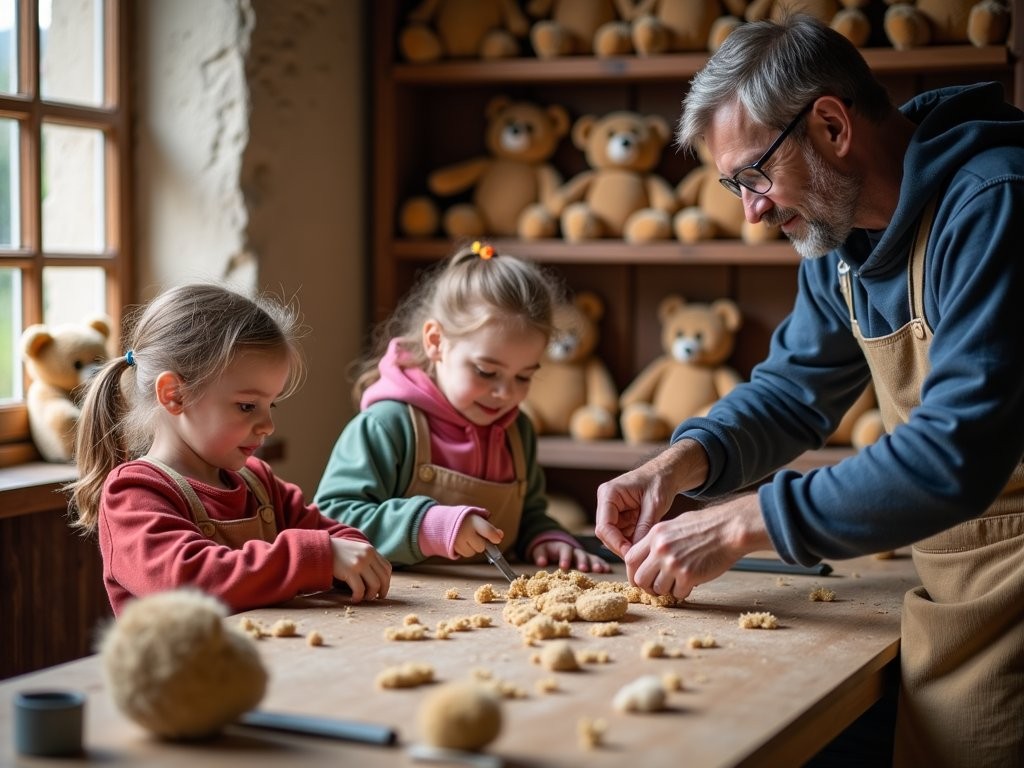
💡 Pro Tips
- Book interactive workshops in advance during peak season
- Establish a souvenir budget for each family member at the start of your trip
- Schedule shopping expeditions in the morning when children are typically more patient
Final Thoughts
As my son and I wandered back toward Rothenburg's medieval gate on our final evening, shopping bags in hand and the golden hour light bathing the ancient stones in amber warmth, I reflected on what makes this town's shopping experience so exceptional. In an age of global retail homogenization, Rothenburg offers something increasingly precious—authenticity. The treasures we carry home aren't just souvenirs; they're tangible connections to centuries of craftsmanship and tradition, each with a story and a face behind it. Whether you're hunting for the perfect Christmas ornament at Käthe Wohlfahrt, watching a teddy bear take shape under your child's direction, or discovering a handcrafted piece of jewelry in an artisan's workshop, Rothenburg rewards the curious shopper with experiences as valuable as the purchases themselves. As we passed through the imposing stone archway, my son—typically not one for sentimentality—remarked, 'I'll actually remember where everything we bought came from.' Perhaps that's the true measure of a meaningful shopping experience: not what you acquire, but the memories attached to each treasure. Rothenburg ob der Tauber doesn't just sell souvenirs; it creates connections that last long after you've returned home.
✨ Key Takeaways
- Rothenburg's Christmas Market (Reiterlesmarkt) offers authentic handcrafted items rather than mass-produced souvenirs
- The town's artisan workshops in quieter side streets provide the most unique shopping experiences
- Family-friendly interactive shopping experiences create meaningful souvenirs and memories
- Culinary souvenirs like schneeballen pastries and Franconian wines make delicious mementos of your visit
📋 Practical Information
Best Time to Visit
Late November through December for Christmas markets; April-October for general shopping
Budget Estimate
€200-500 per person for a weekend of moderate shopping
Recommended Duration
2-3 days
Difficulty Level
Easy
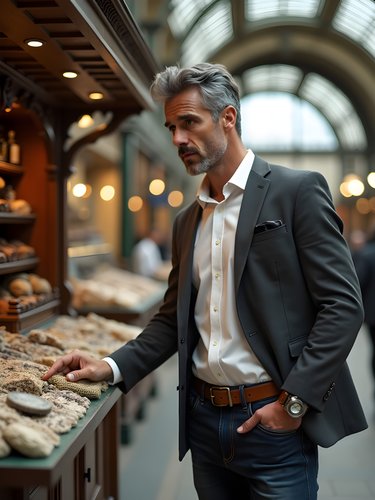


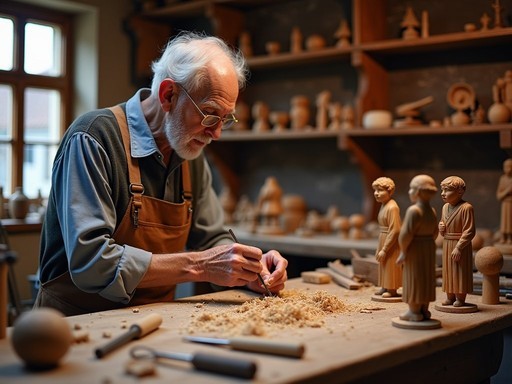
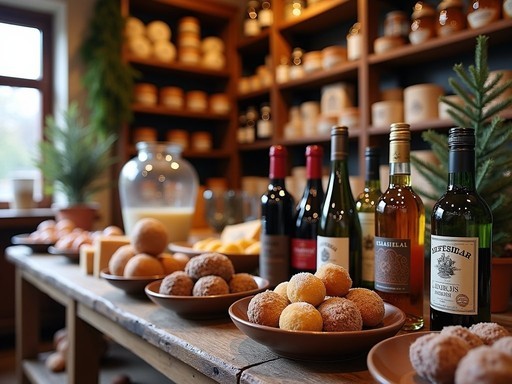

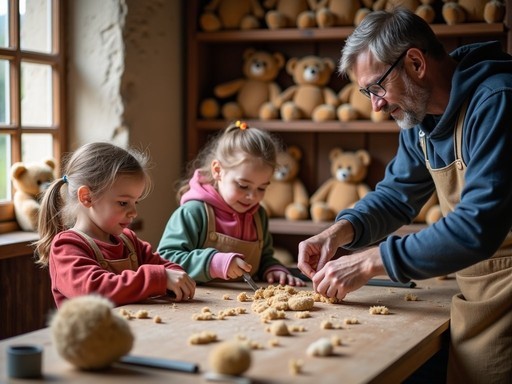


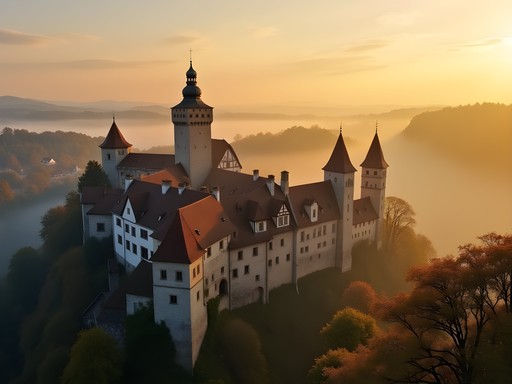
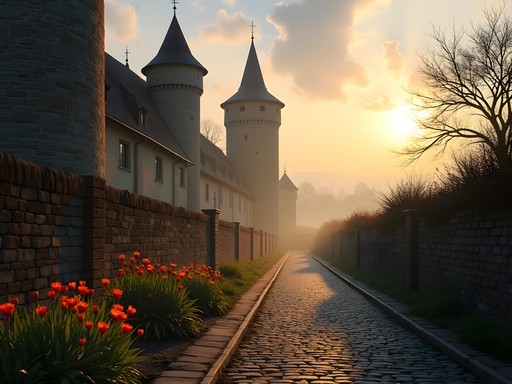



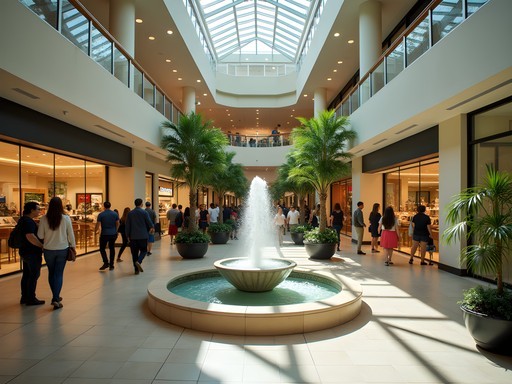


Comments
GermanAdventurer
Local tip: Skip the schneeballs! They look pretty but are basically just sugar and dough. Locals rarely eat them - they're mostly for tourists. Instead, try Franconian wine and lebkuchen (gingerbread) from the smaller bakeries!
nomadqueen
Nooo I loved those schneeballs! 😂 But you're right, the lebkuchen was amazing too. I brought some home and it was gone in days!
TravelBug88
Going there next month! Any tips on parking? Is it hard to find spots near the old town?
Mark Franklin
There are several parking lots just outside the walls. P1 and P2 are closest to the center. They fill up fast during peak season, so arrive early! It's about €8 for the day.
TravelBug88
Perfect, thanks for the info! Can't wait to see those Christmas shops.
Douglas Bradley
Great write-up on Rothenburg's shopping scene, Mark! I'd add that timing is everything when visiting. The Christmas market is magical but incredibly crowded on weekends. If possible, stay overnight and explore early morning or evening when day-trippers leave. The artisan shops along Schmiedgasse were my favorite discovery - especially the handmade leather goods workshop where the craftsman has been using the same techniques for 40+ years. For anyone planning a visit, I found the Rick Steves Germany incredibly helpful for finding these hidden gems. The walking tour map took me to several shops I would have otherwise missed.
nomadqueen
OMG I was just at Käthe Wohlfahrt last month and nearly maxed out my credit card! 😂 That store is DANGEROUS if you love Christmas decorations. I bought these adorable wooden ornaments for everyone in my family. The staff was super patient while I spent like two hours deciding. Mark, did you try the schneeballs? Those sugar-covered pastry balls were everywhere and I became slightly addicted!
Mark Franklin
Haha, I know that feeling! My son and I definitely tried the schneeballs - he loved the chocolate-covered ones. Did you visit any of the smaller craft shops I mentioned? Those were my favorite discoveries.
nomadqueen
Yes! That little woodcarving shop near the city wall was amazing. The owner showed us how he makes everything by hand. I got a beautiful music box there that plays Silent Night!
escapewalker
Just got back from Germany and wish I'd read this before going! We only did Rothenburg as a day trip and totally missed out on the evening atmosphere everyone's talking about. We did manage to visit Käthe Wohlfahrt though - my kids were absolutely mesmerized by that Christmas village display with the moving parts. My husband had to physically drag them out after an hour! Bought way too many ornaments but they'll be special memories on our tree for years to come. Mark, did you find any good local wines in the shops? We tried a Franconian white that was delicious but forgot to buy some to bring home.
citymood
Those Christmas markets look magical! Adding Rothenburg to my winter bucket list for sure.
Douglas Bradley
They really are something special! I was there last December and the atmosphere is unlike anything else. The mulled wine helps with the cold too!
citymood
Thanks for the tip! Definitely packing extra warm clothes then. How many days would you recommend staying?
Douglas Bradley
Two full days is perfect - one for the main sights and one for shopping. The town is compact but you'll want time to browse without rushing.
Hunter Thompson
Brilliant post, Mark! I backpacked through Germany last winter and Rothenburg was hands down the highlight. For anyone planning a visit, don't miss the small artisan shops along Herrngasse - there's an amazing leather craftsman who makes custom-stamped bookmarks while you wait. Perfect affordable souvenir! Also, if you're into photography, the Christmas market is absolutely stunning at blue hour (just after sunset). The lights come on but there's still enough natural light to capture the details. I spent three evenings just wandering around with my camera. Oh, and if anyone needs a break from shopping, the Medieval Crime Museum is fascinatingly bizarre. Not what you'd expect in such a picture-perfect town!
vacationgal
Love your photos of the Christmas ornaments! Brings back wonderful memories of our visit last year.
Timothy Jenkins
Brilliant post, Mark! Your section about finding artisan treasures beyond the tourist trail resonated with me. On my third visit to Rothenburg last autumn, I finally ventured into the residential areas and discovered some wonderful pottery workshops. The local artisans were so welcoming despite my limited German. One tip for readers: if you're visiting outside the Christmas season, check if your stay coincides with any of the smaller seasonal markets or festivals. The spring craft market in May is delightful and much less crowded than Reiterlesmarkt. The quality of handmade items is exceptional, and you'll be supporting local craftspeople directly. Your father-son experience sounds wonderful - Rothenburg is indeed a place that appeals across generations!
sunnywalker
I didn't know about the spring market! Adding that to my bucket list now. Thanks Timothy!
hikingone
Great post! I'm planning to visit in November - is that too early for the Christmas market? And is it worth staying overnight or is Rothenburg doable as a day trip from Munich?
vacationgal
Not Mark, but the Reiterlesmarkt usually starts end of November! Definitely stay overnight - the town empties of day-trippers after 5pm and it's magical in the evening.
Hunter Thompson
100% agree with vacationgal! Rothenburg is a completely different experience after the tour buses leave. I stayed at a guesthouse right in the old town and loved wandering the empty streets at night. Also, Munich is quite far for a day trip - about 2.5 hours each way. If you're set on a day trip, Frankfurt or Nuremberg are closer options. I used Rick Steves Germany to plan my visit and it had some great walking tour suggestions.
hikingone
Thanks for the tips! Will definitely book an overnight stay then. Can't wait to experience those empty evening streets!
Venture X
Premium card with 2X miles, $300 travel credit, Priority Pass